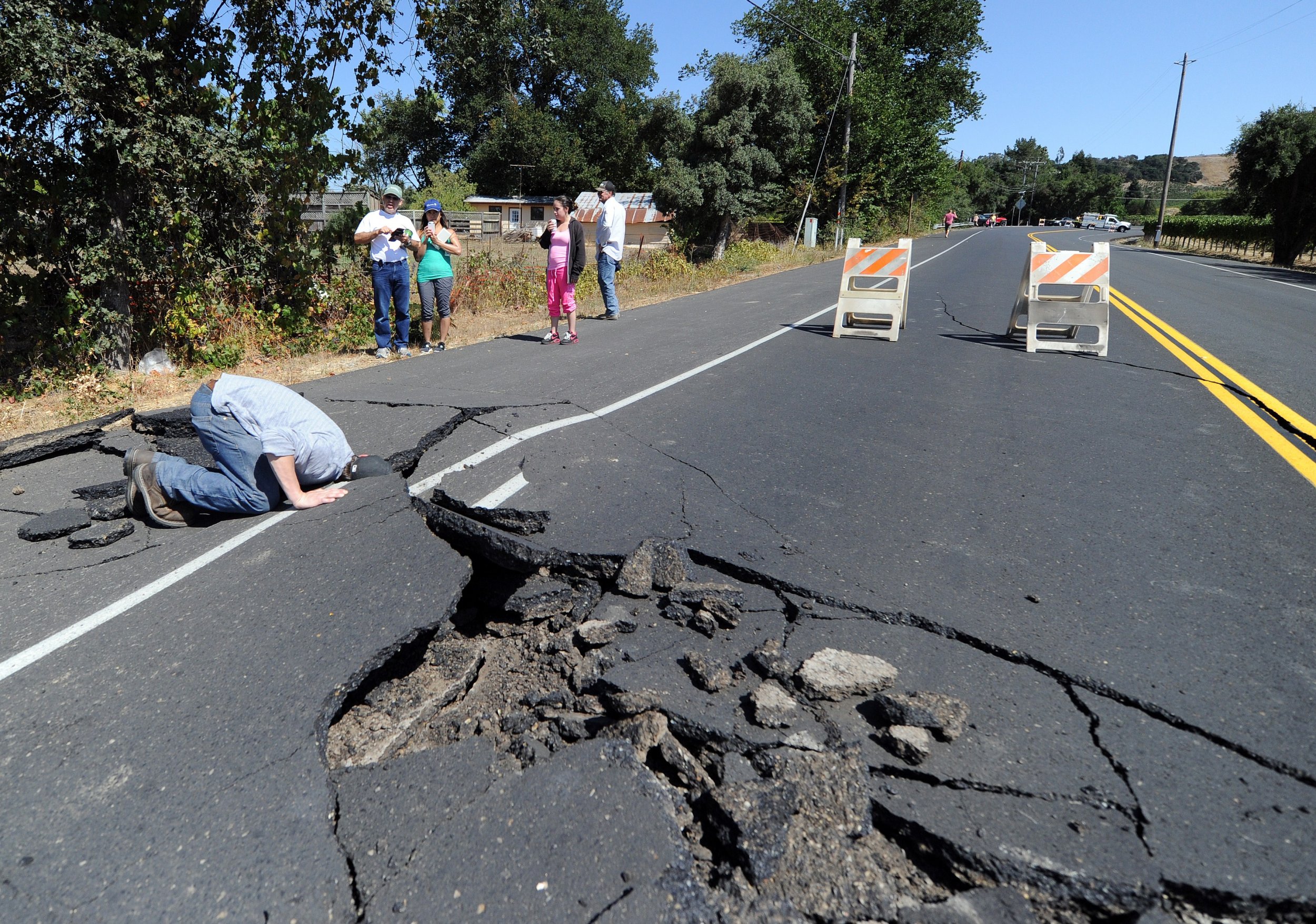
Update | An earthquake struck the Bay Area early Thursday morning along a fault line that U.S. Geological Survey scientists have called a "tectonic time bomb." The earthquake hit near Berkeley, California, as a magnitude 4.4. The damage is expected to be minimal, but it occurred along the Hayward fault—one of the seven fault zones in the Bay Area, according to the USGS.
The earthquake shook for about five to 10 seconds, reported the Los Angeles Times, and an estimated 9.8 million people felt the quake. The depth was about 8 miles, which is relatively shallow. Some earthquakes can be more than 350 miles deep in countries such as Fiji, according to USGS duty seismologist Robert Sanders.
"These shallower events are generally the more common events," Sanders told Newsweek. A shallow event has a high probability to cause damage, though a much deeper event could be felt over more widespread area, he explained. "The closer to the surface, the more intense the movement and ground-shaking will be locally." The event was felt as far east as Sacramento and beyond San Jose, to the south of Berkeley. The shaking was weak to light in most areas, according to the USGS as of Thursday morning.
The Did You Feel It? survey form for the Berkeley, CA M4.4 EQ is back up and running: https://t.co/jY2poBayEX Please tell us what you felt. pic.twitter.com/OVb8r4p22q
— USGS (@USGS) January 4, 2018
The Hayward fault where the quake shook lies beneath a highly populated area in the Bay—and the next "big one" could be a magnitude 6.8 to 7 earthquake. This fault zone runs from San Pablo Bay in the north to Fremont in the south—passing through Berkeley, Oakland, Hayward and Fremont.
"We know that it's ready [and] is capable of having another big earthquake at anytime," Tom Brocher, seismologist at the USGS, told Newsweek. The Hayward fault is highly urbanized, with communities built on top of the fault, up and down the length of the East Bay. Though a 1972 law was passed that restricted new buildings from being constructed on top of the earthquake fault, older neighborhoods are still at risk. Moving further south along the Hayward fault, Brocher said, you can see the impact of the law as buildings aren't built directly on it.
"You can't get far from the Hayward fault because of the bay, so the entire East Bay is pretty close to the Hayward fault," Brocher said. "This earthquake was right in the center of the Bay Area, and it was very widely felt throughout."
The fault is considered to be "creeping" because there is evidence of it steadily slipping 5 millimeters each year. Roads, curbs and buildings are frequently offset from the "creeping." A 2003 report determined that the Hayward–Rodgers Creek fault system would produce at least a magnitude 6.7 earthquake in the next 30 years.
The other fault zones in the region—Calaveras, Concord–Green Valley, Greenville, Rodgers Creek, San Gregorio and perhaps the most notorious San Andreas fault—all crisscross through the Bay Area region. Hayward crosses right through the football stadium of the University of California, Berkeley.
The last major quake along the Hayward fault happened in October of 1868, when a magnitude 6.8 hit the San Francisco Bay region, making it the most destructive earthquake in the state's history. The past five large earthquakes on Hayward fault have been about 140 years apart, so this fault and the Rodgers Creek faults are the most likely to have a major earthquake in the bay.
The 1868 quake was the 12th most lethal in California history, killing 30 people. Per USGS, it was known as the "great San Francisco earthquake" until the magnitude 7.9 quake struck the San Andreas Fault in 1906.
In mid-November, an earthquake swarm struck the San Andreas fault after a 4.6 magnitude quake hit Monterey County, California. Last week, two earthquakes hit outside of San Jose. Though scientists can estimate how strong a quake could be on various fault lines, earthquake prediction is still in the future.
This article has been updated to include additional information about how widespread the earthquake was felt in addition to the dangers of a major earthquake at the Hayward fault.
SaveSave
Uncommon Knowledge
Newsweek is committed to challenging conventional wisdom and finding connections in the search for common ground.
Newsweek is committed to challenging conventional wisdom and finding connections in the search for common ground.
About the writer
Sydney Pereira is a science writer, focusing on the environment and climate. You can reach her at s.pereira@newsweekgroup.com.
To read how Newsweek uses AI as a newsroom tool, Click here.








